Abstract
Two species of Echinococcus occur in Canada: (1) E. multilocularis and (2) E. granulosus. E. multilocularis, originating in the Arctic, is spreading southwards and has reached Saskatchewan and the Dakotas. The original hosts are foxes but dogs and cats are alternatives. The larvae occur in field mice as multilocular microcysts containing numerous protoscolices, but in man the cysts are alveolar and sterile and resemble both in histology and growth a cholangiocellular carcinoma of the liver with metastases. Signs and symptoms are chronic and poorly defined. Diagnosis is difficult. Test antigens are not yet satisfactory. E. granulosus has a sylvatic cycle, the adult tapeworms living in wolves and dogs, while the larvae occur only in Cervidae and man. The cysts occur almost exclusively in the lungs as unilocular, macrocystic, relatively benign tumours, although abnormal complications can occur. The Casoni intradermal sensitivity test, its technique and interpretation are discussed.
Full text
PDF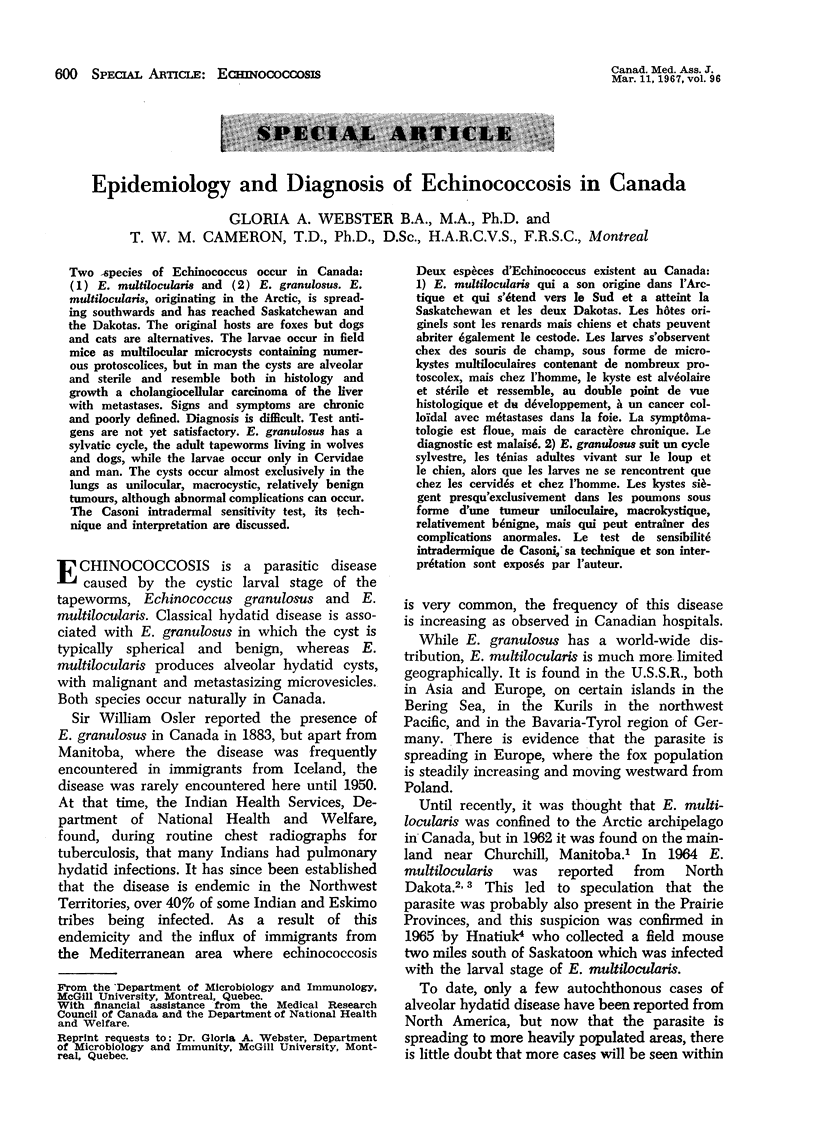
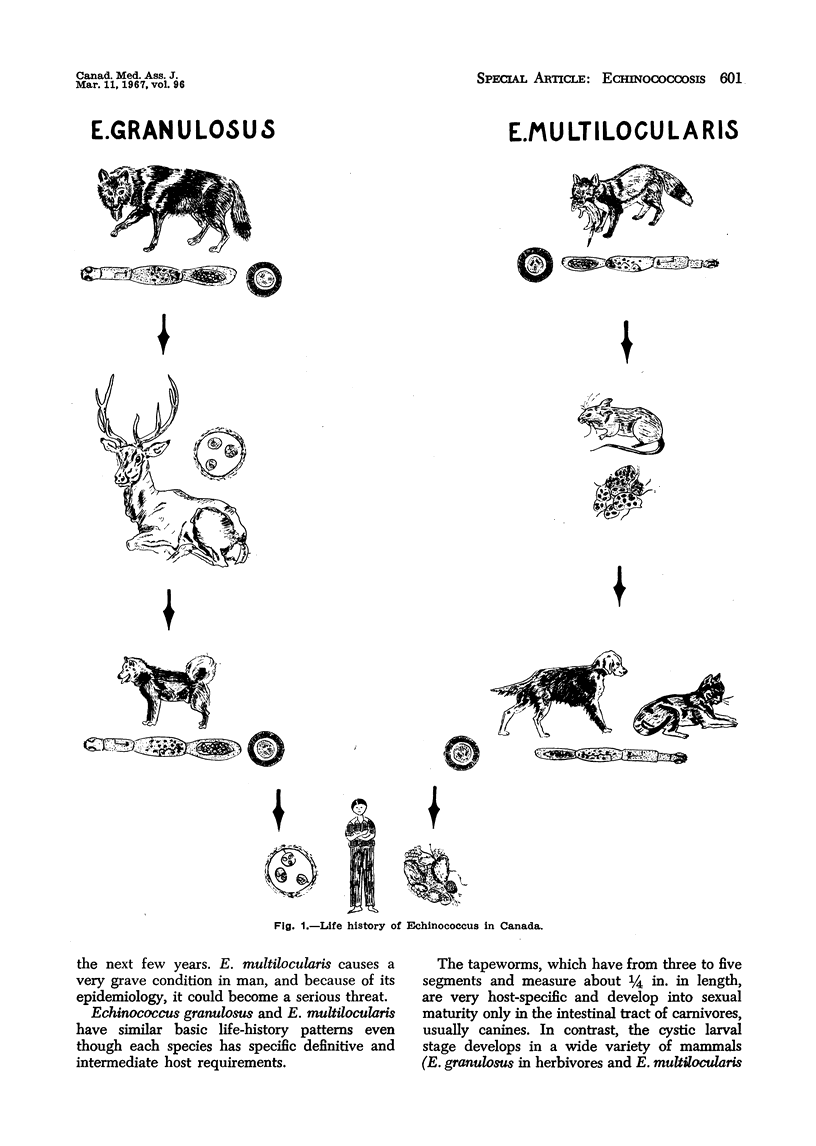
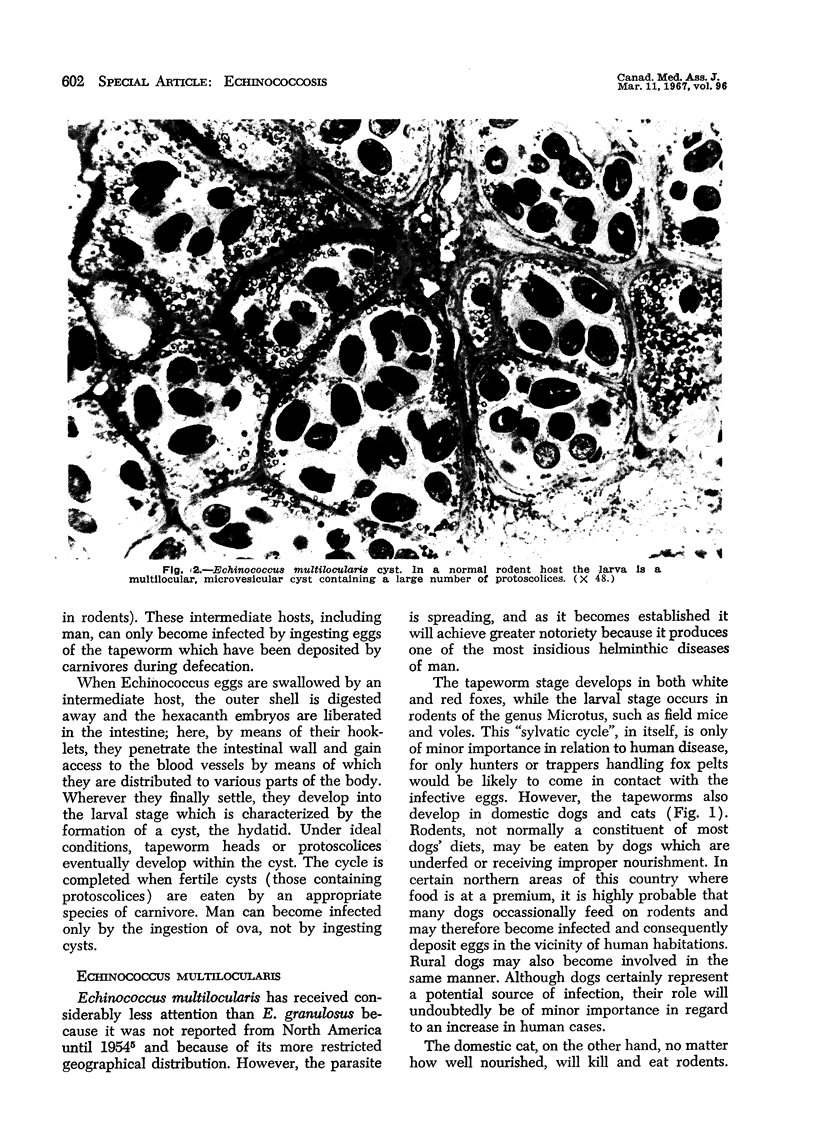
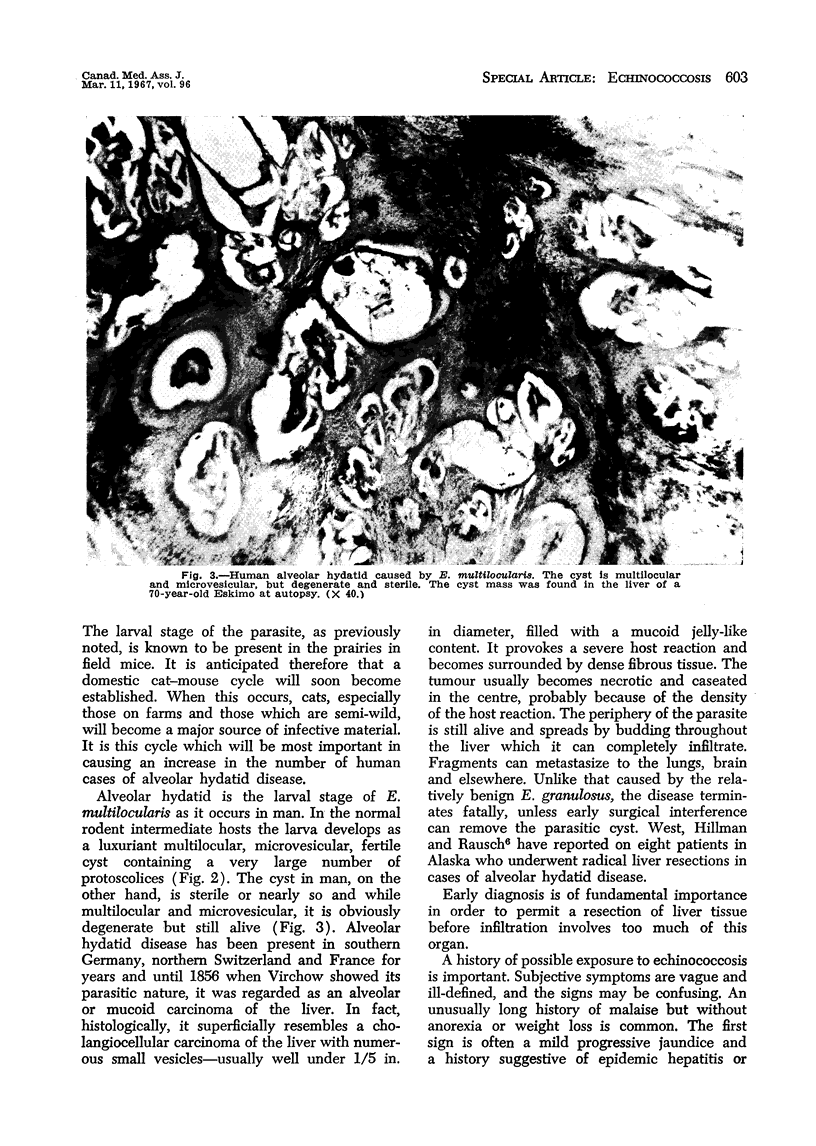
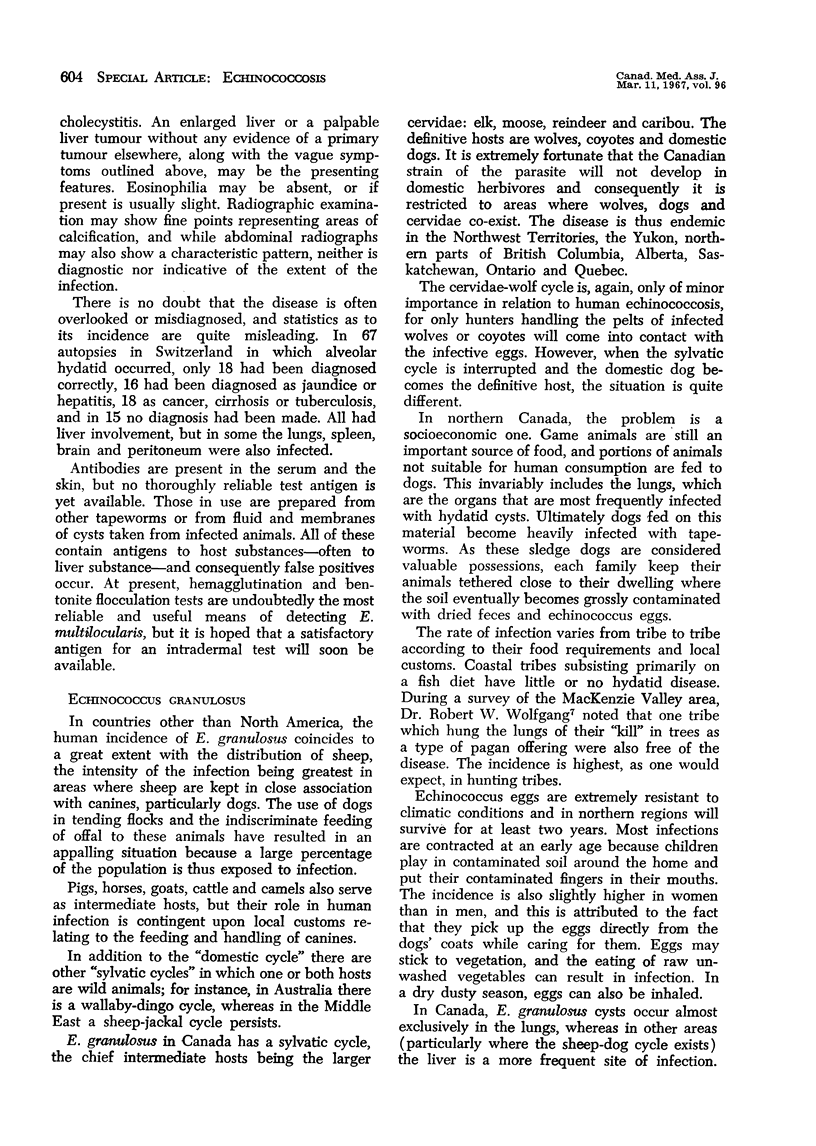
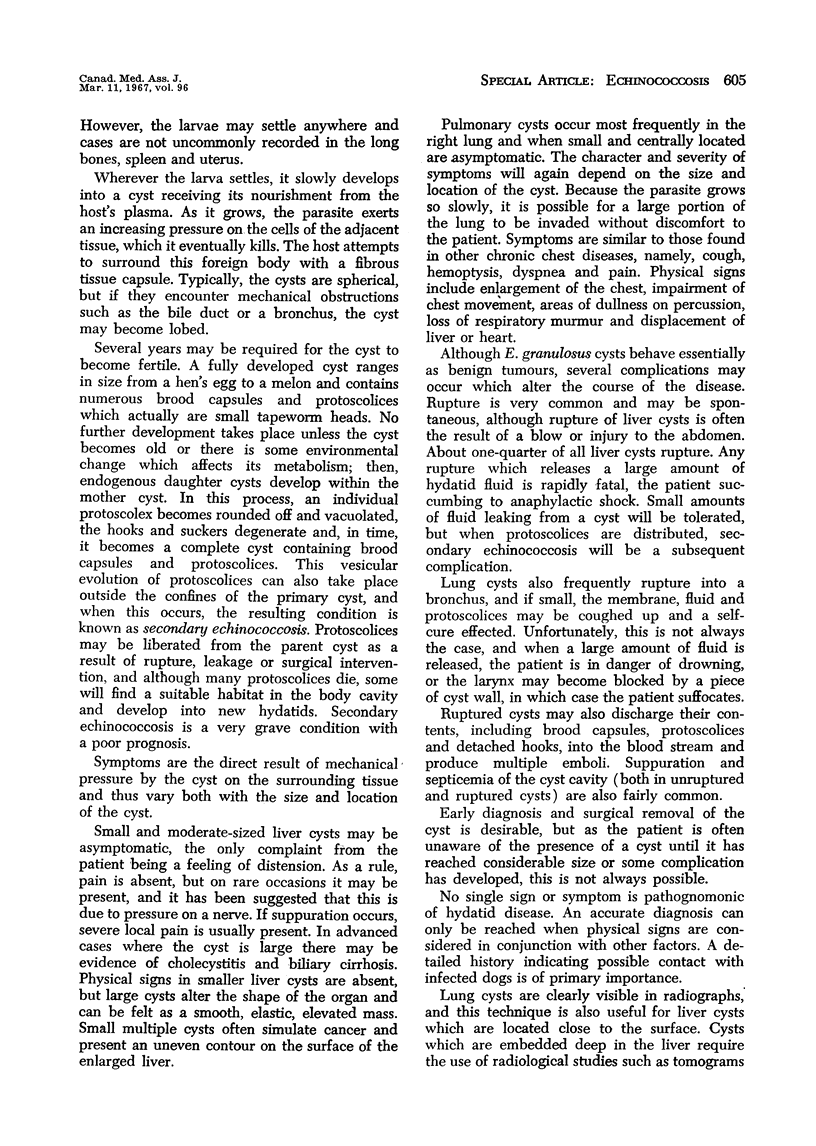
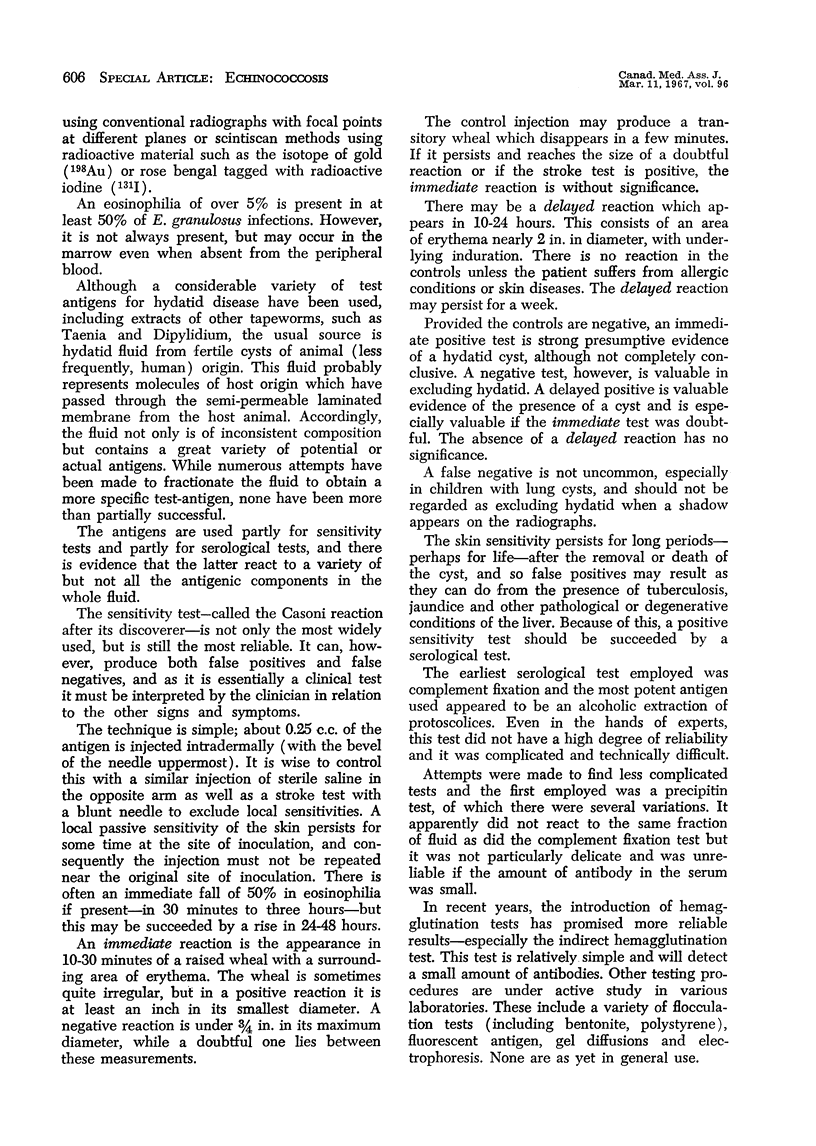
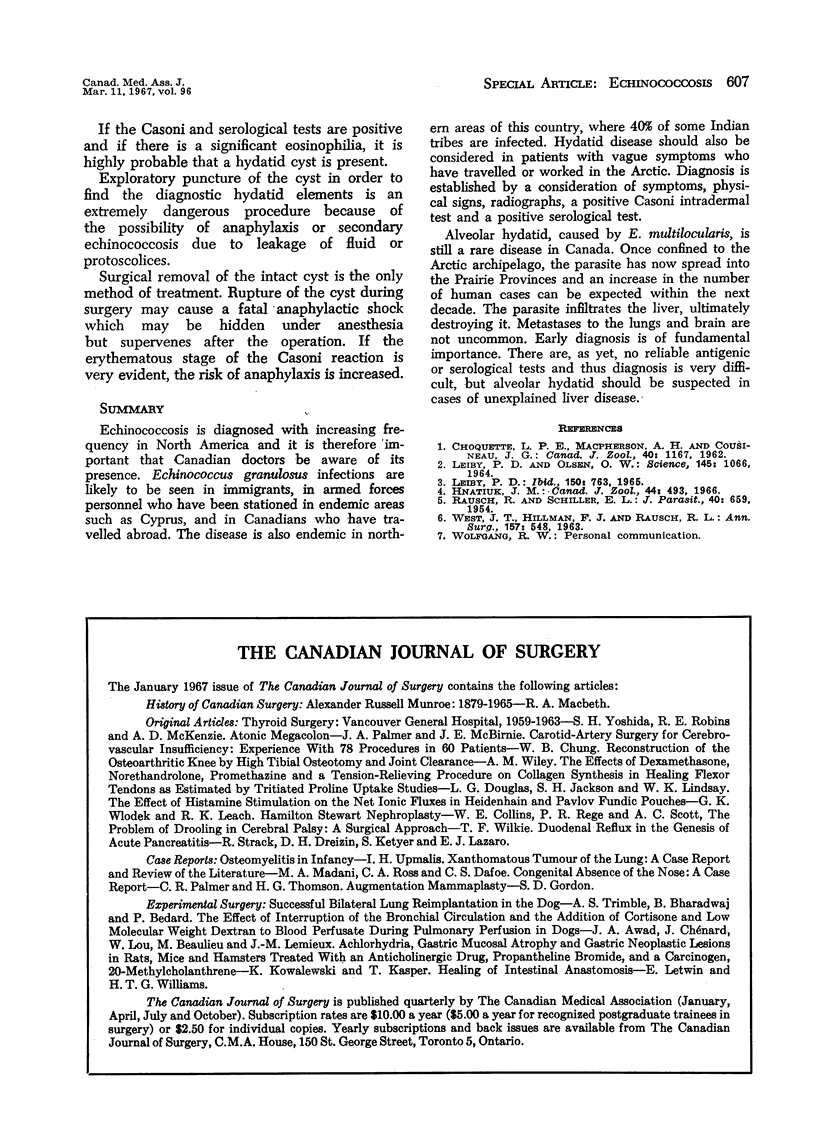
Images in this article
Selected References
These references are in PubMed. This may not be the complete list of references from this article.
- LEIBY P. D., OLSEN O. W. THE CESTODE ECHINOCOCCUS MULTILOCULARIS IN FOXES IN NORTH DAKOTA. Science. 1964 Sep 4;145(3636):1066–1066. doi: 10.1126/science.145.3636.1066. [DOI] [PubMed] [Google Scholar]
- Leiby P. D. Cestode in North Dakota: echinococcus in field mice. Science. 1965 Nov 5;150(3697):763–763. doi: 10.1126/science.150.3697.763. [DOI] [PubMed] [Google Scholar]
- WEST J. T., HILLMAN F. J., RAUSCH R. L. Alveolar hydatid disease of the liver: rationale and technics of surgical treatment. Ann Surg. 1963 Apr;157:548–559. doi: 10.1097/00000658-196304000-00009. [DOI] [PMC free article] [PubMed] [Google Scholar]




